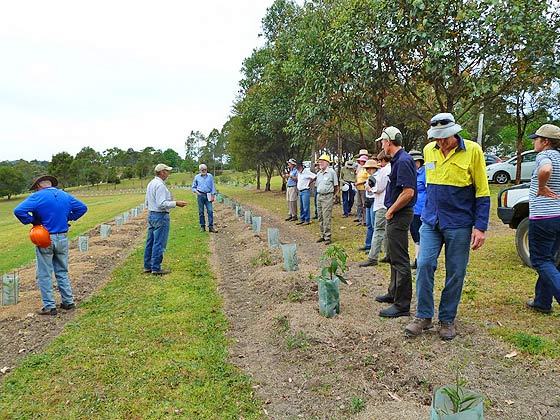October 2012 field day
Twenty nine people attended the field day at the Wootton property, considering techniques for native tree plantation establishment. Chris Scott of NSW Landcare and a nurseryman advised of the need for good overall planning, then to select appropriate plants for the site considering its fertility and order seeds and plants well in advance.
Site preparation can include ripping to at least 400mm depth to attract and maintain moisture, and weeding. Plant into the rip line in association with rain, autumn possibly being the optimum season. Place plants in a bucket of water just prior to planting to provide adequate initial moisture. Management for another two years is advisable considering moisture, weeds, frost and herbivores – mulch and guards can assist.
The group inspected a recently established mixed species native plantation of floodedgum, red gum, tallowood, greygum and brush box, planted along the contour, with a slight fall, using various ripping patterns. “Main” plantings were at 4 metre spacings with a wattle in between to provide a short term nitrogen fix. Growth rates of the plantings, being managed by several different regimes, are being measured as part of the carbon farming initiative.
This was a very informative and enjoyable field day.
